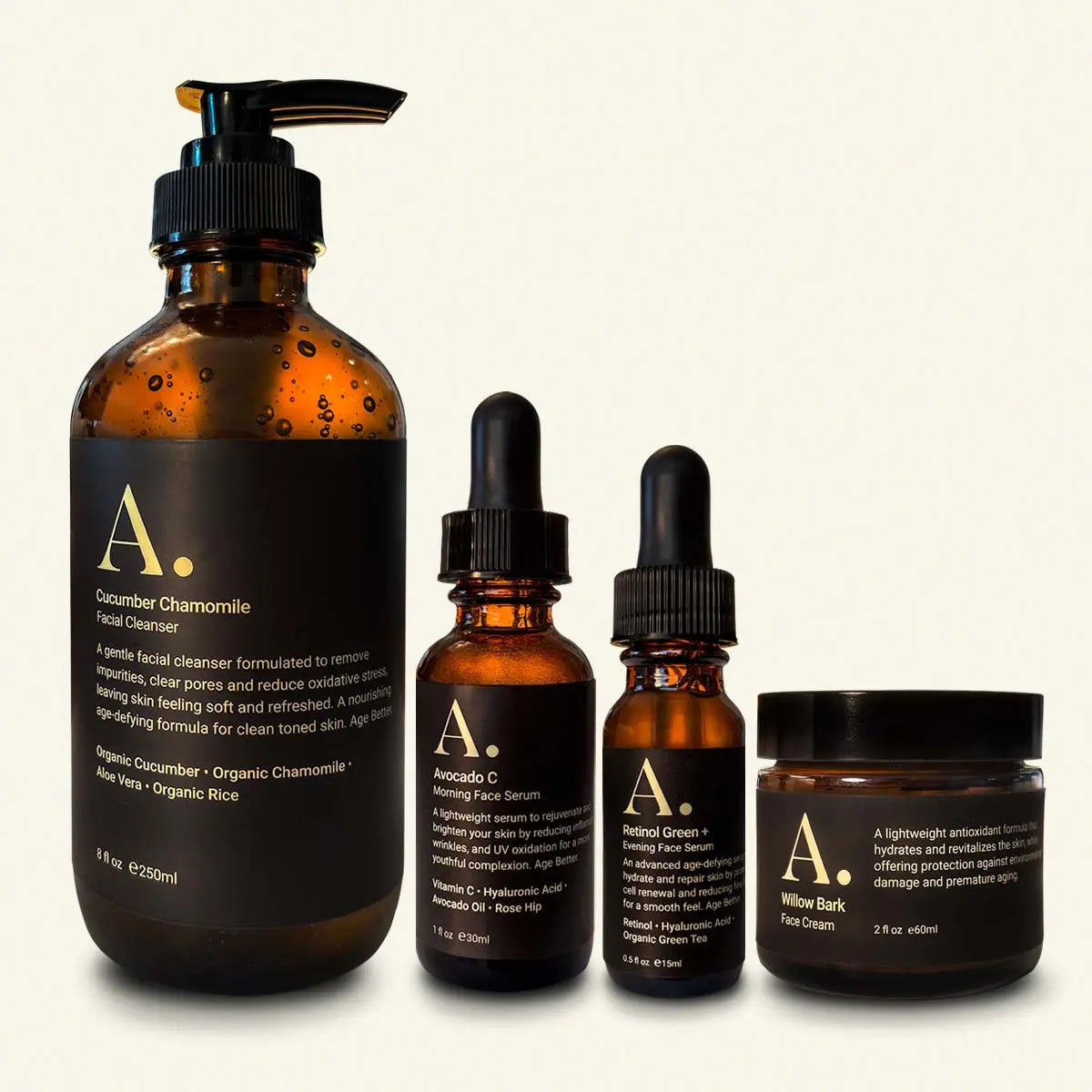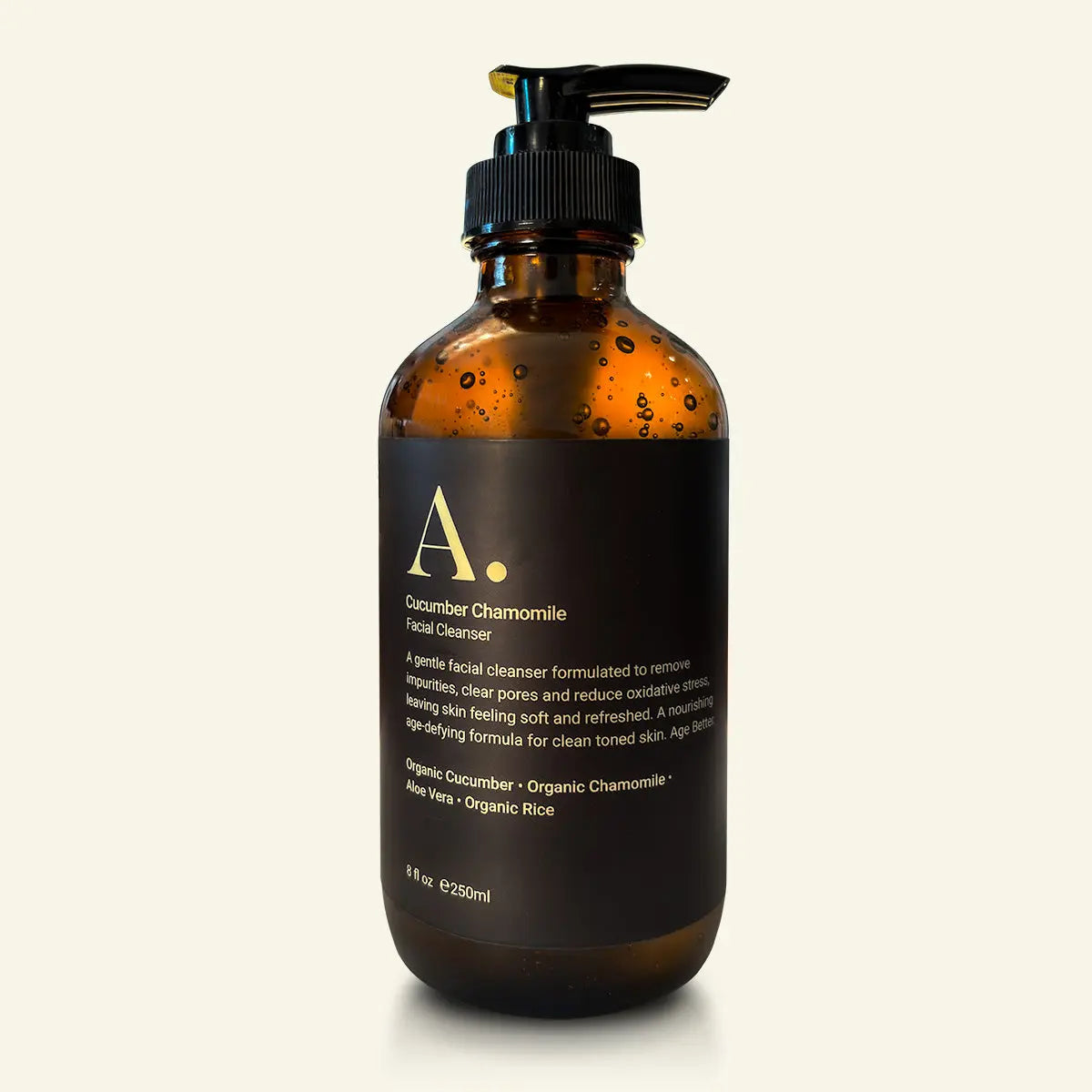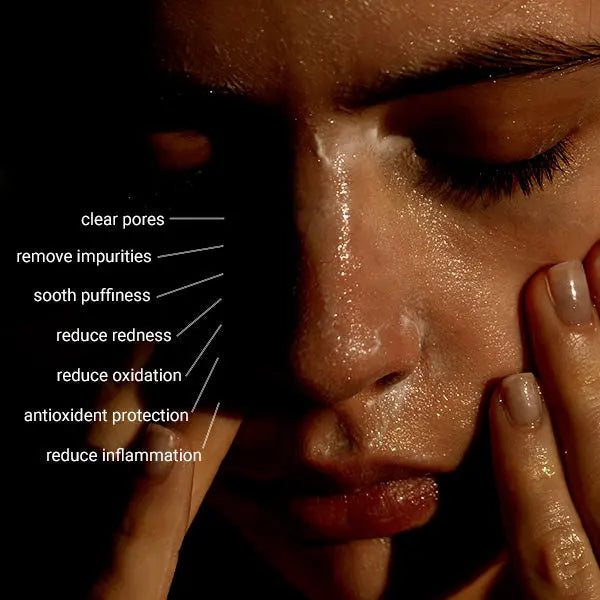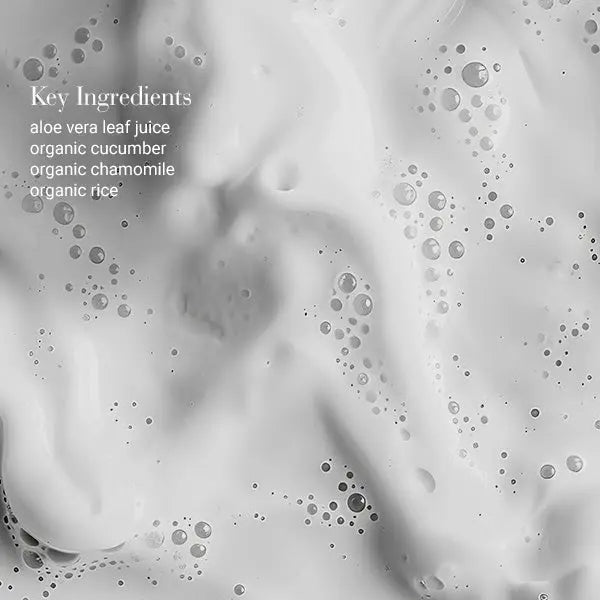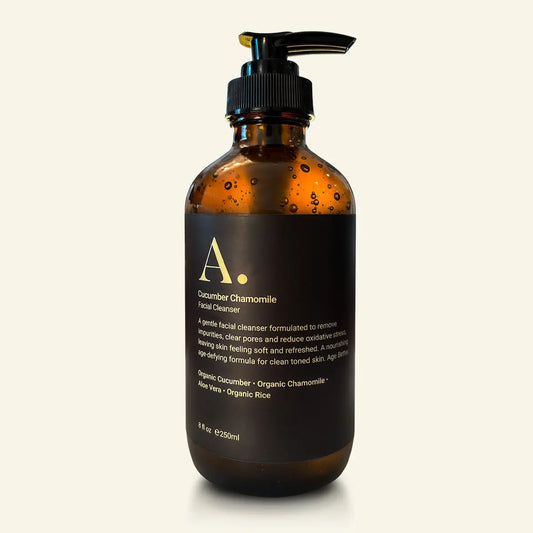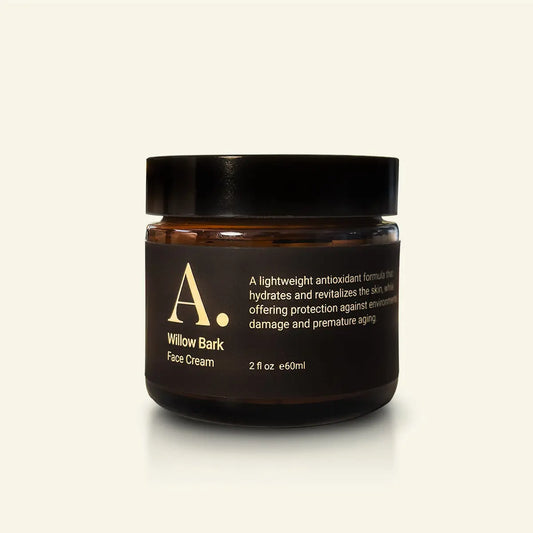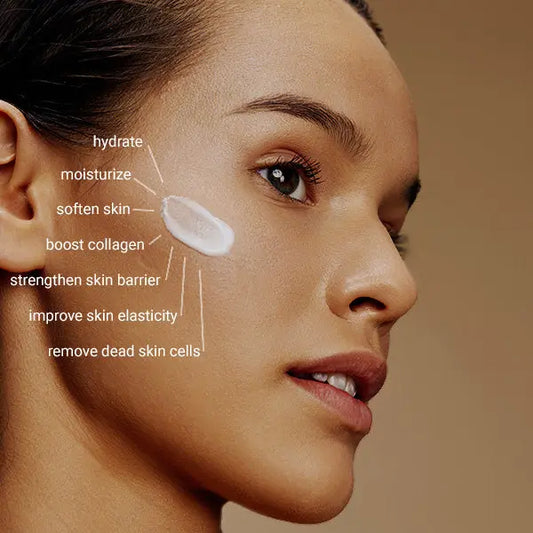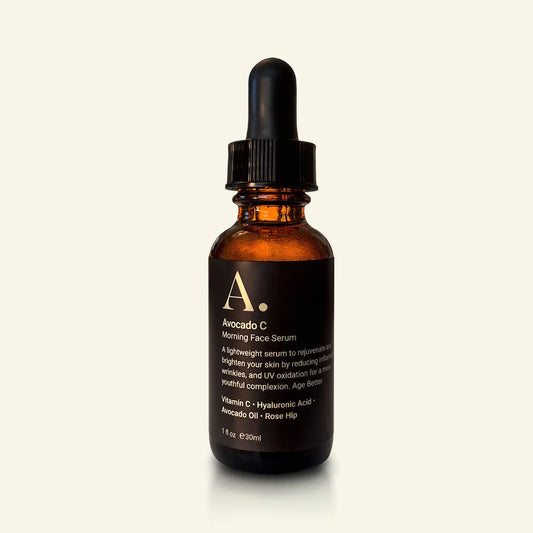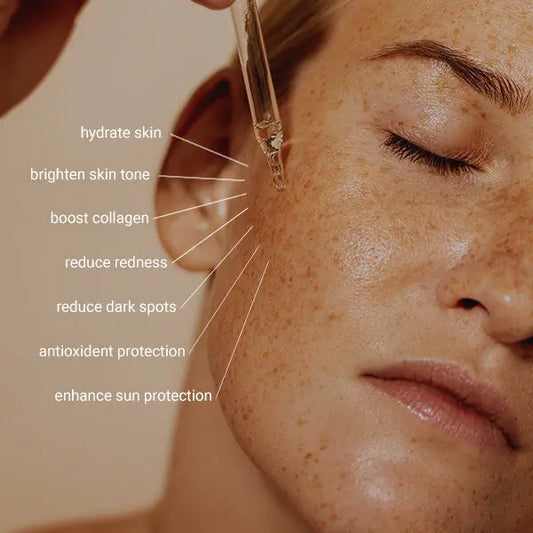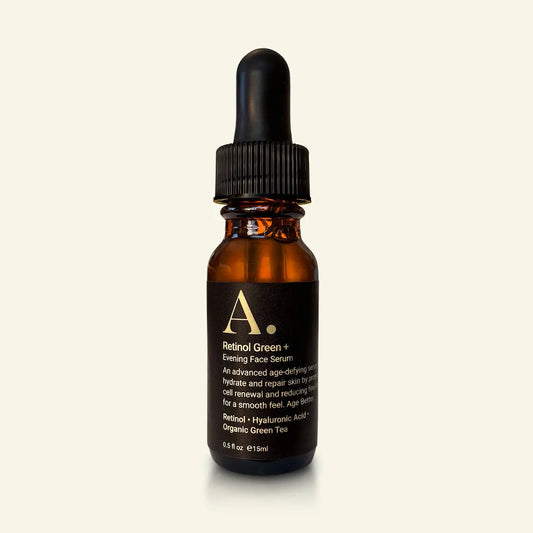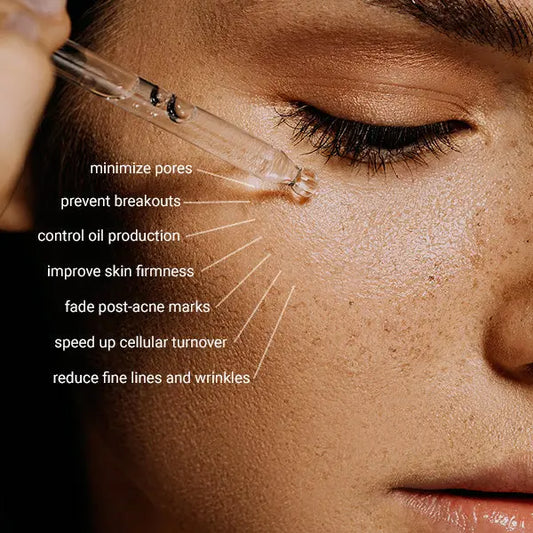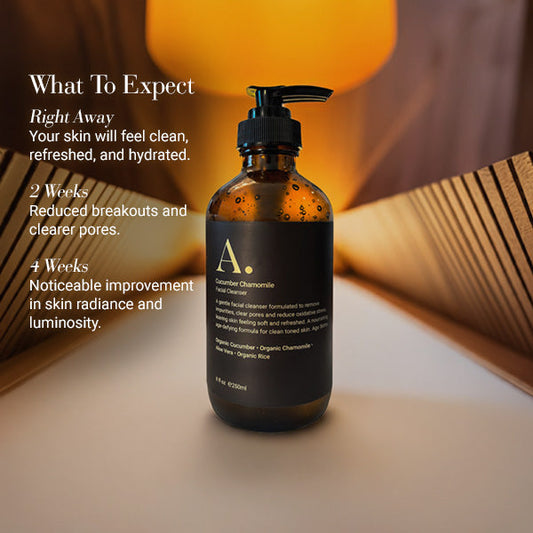
Hormone-Safe Skincare: How to Avoid Hormone Disruptors in Your Beauty Routine
Share
Skincare and Hormone Health: What You Need to Know
Most of us put a lot of thought into what we eat, how we move, and how we manage stress — all in the name of supporting our hormones and overall well-being. But there’s one place many women forget to look:
Their skincare routine.
Yes, the very products you smooth onto your skin every day — your cleanser, serum, moisturizer, SPF — could be quietly undermining your hormone health.
This is especially important if you are in your 30s, 40s, or 50s, when hormone shifts are already happening naturally. The last thing you want is for your skincare products to make things worse.
In this post, we’ll cover:
- What hormone disruptors are
- How they show up in everyday skincare
- Why women 30+ should pay extra attention
- How to build a hormone-safe beauty routine
- Ingredients to avoid — and what to use instead
Let’s get started.
What Are Hormone Disruptors?
Hormone disruptors, also called endocrine-disrupting chemicals (EDCs), are substances that interfere with your body’s natural hormone system.
Hormones are chemical messengers that regulate countless functions in your body, including metabolism, energy, mood, sleep, fertility, skin health, and weight.
Hormones are incredibly sensitive, and it doesn’t take much to throw them off balance.
EDCs can mimic, block, or interfere with hormones, especially estrogen, progesterone, and thyroid hormones. They essentially trick your body into responding in ways it shouldn’t — or prevent hormones from doing their jobs properly.
Over time, this hormonal disruption can contribute to issues such as:
- Irregular cycles
- Perimenopause symptoms
- Mood swings
- Sleep problems
- Fertility struggles
- Weight gain
- Fatigue
- Skin changes
- Certain cancers
Many of these chemicals also accumulate in the body, making their effects even more long-lasting.
How Do Hormone Disruptors End Up In Skincare?
Your skin is your largest organ — and it is highly absorbent.
When you apply a lotion, serum, or sunscreen, many ingredients do not just sit on your skin; they are absorbed into your bloodstream.
Studies have found ingredients such as parabens and phthalates in urine, blood, and even breast milk after topical use.
Unfortunately, many mainstream skincare products — even luxury brands — contain ingredients that are known or suspected hormone disruptors.
Since we use these products daily, over years or even decades, the cumulative exposure matters.
Common Hormone Disruptors to Avoid in Skincare
Here are some of the most common hormone disruptors to watch for in your skincare routine:
Parabens
Parabens are preservatives used to prevent microbial growth.
They are often listed as:
- Methylparaben
- Ethylparaben
- Propylparaben
- Butylparaben
Why it matters: Parabens mimic estrogen in the body. Studies have linked them to fertility issues and an increased risk of hormone-sensitive cancers, such as breast cancer.
Phthalates
Phthalates are used to make products flexible or to help fragrance last longer. They often hide under the term “fragrance” or “parfum.”
Why it matters: Phthalates can disrupt thyroid function and alter levels of sex hormones such as estrogen and testosterone. They have also been linked to fertility problems and developmental issues.
Synthetic Fragrance / Parfum
A single “fragrance” listing can hide hundreds of undisclosed chemicals, many of which are hormone disruptors or allergens.
Why it matters: Synthetic fragrance often contains phthalates and other endocrine disruptors. It is one of the biggest hidden sources of EDCs in skincare.
Phenoxyethanol
Phenoxyethanol is a common preservative used in place of parabens — but it is not necessarily a safer choice.
Why it matters: Phenoxyethanol has been shown to affect hormone levels in animal studies and may cause skin irritation and reproductive toxicity.
Oxybenzone & Chemical Sunscreens
Oxybenzone and related compounds are used in many chemical sunscreens.
Why it matters: Oxybenzone is a known endocrine disruptor. It can mimic estrogen and has been linked to hormone imbalance and reproductive harm.
Triclosan
Triclosan is an antibacterial agent sometimes found in acne treatments or cleansers.
Why it matters: Triclosan can interfere with thyroid hormones and contribute to antibiotic resistance.
Why Women 30+ Should Pay Special Attention
If you are in your 30s, 40s, or 50s, this matters more than ever.
These are decades of major hormonal transitions:
- Estrogen and progesterone naturally start to fluctuate in your late 30s.
- Many women enter perimenopause in their 40s, with shifting cycles and symptoms.
- By your 50s, menopause arrives, bringing lower levels of key hormones.
This is already a sensitive time for your body. Adding daily exposure to hormone disruptors can worsen symptoms.
Common complaints linked to hormone imbalance and EDC exposure include:
- Heavier or irregular periods
- Mood swings, anxiety, or depression
- Fatigue
- Weight gain, especially around the midsection
- Hot flashes
- Sleep disturbances
- Low libido
- Dry, aging skin
If you have been wondering why you feel off, your skincare routine could be a hidden piece of the puzzle.
How to Build a Hormone-Safe Skincare Routine
The good news is that once you know what to look for, it is easy to make better choices. Here is how to switch to a hormone-friendly beauty routine:
Read Ingredient Lists
Do not be fooled by marketing terms like “natural,” “clean,” or “green” — these are unregulated and often meaningless. Check ingredient lists carefully and avoid the known disruptors listed above.
Avoid Synthetic Fragrance
Look for products labeled “fragrance-free” or those that use only 100% essential oils for scent.
Prioritize Glass Packaging
Plastic packaging can leach additional EDCs such as BPA or BPS into your products and ultimately your skin.
Choose glass-packaged skincare whenever possible.
Choose Transparent Brands
Support brands that clearly disclose all ingredients, explain their sourcing, and test for safety.
Simplify Your Routine
More is not better. Focus on a few high-quality products with ingredients your body recognizes and supports.
What Ingredients to Use Instead
When you remove hormone disruptors, what should you use? Look for skincare products rich in:
- Cold-pressed plant oils (jojoba, argan, rosehip)
- Botanical extracts (chamomile, calendula, green tea)
- Essential oils (used sparingly and safely)
- Mineral sunscreens (zinc oxide, titanium dioxide)
- Natural butters (shea butter, cocoa butter)
- Hyaluronic acid from natural fermentation
- Vitamin C from non-synthetic sources
These ingredients nourish your skin without burdening your hormones.
The Bottom Line
Your skincare choices matter — not just for glowing skin, but for whole-body wellness.
Women in midlife are especially vulnerable to the cumulative effects of hormone-disrupting chemicals. Your beauty routine is one of the easiest places to reduce exposure.
By choosing hormone-safe, clean skincare, you support not only your skin but your mood, energy, metabolism, and long-term health.
Want an easy place to start? All of our products at Ages are:
- Hormone-safe
- Free of endocrine disruptors
- Glass packaged
- Designed with perimenopausal and menopausal skin in mind
Your body — and your future self — will thank you.
Ready to swap out your old skincare for products that truly support your hormones?
